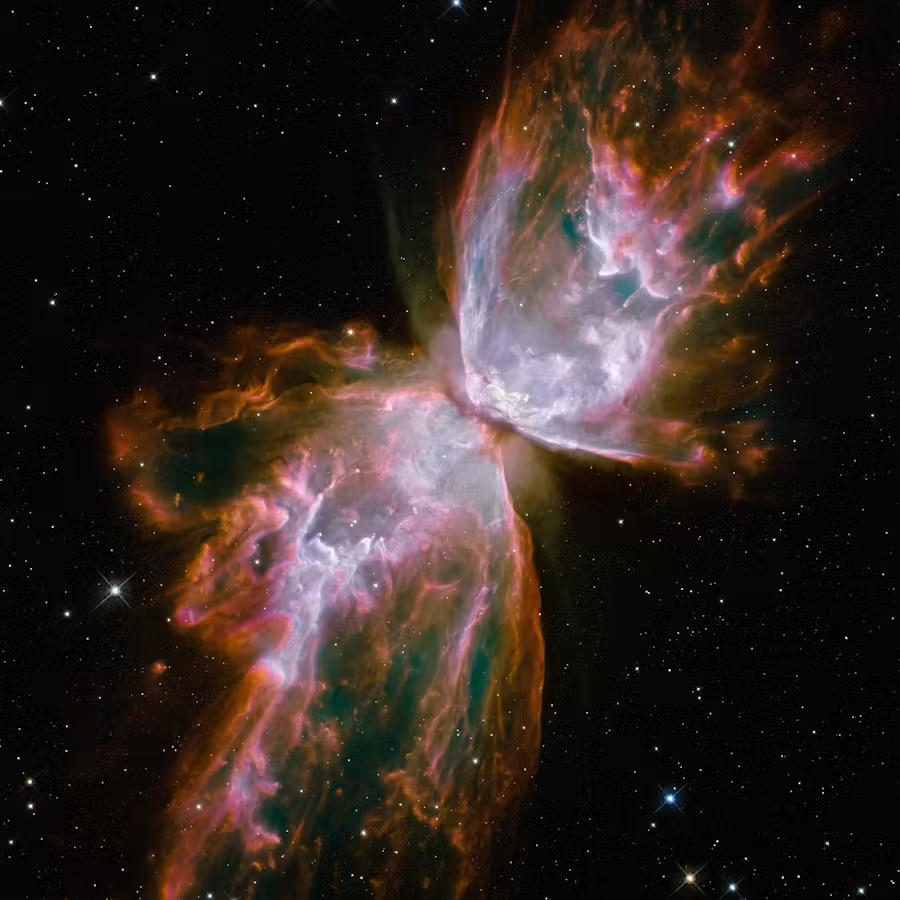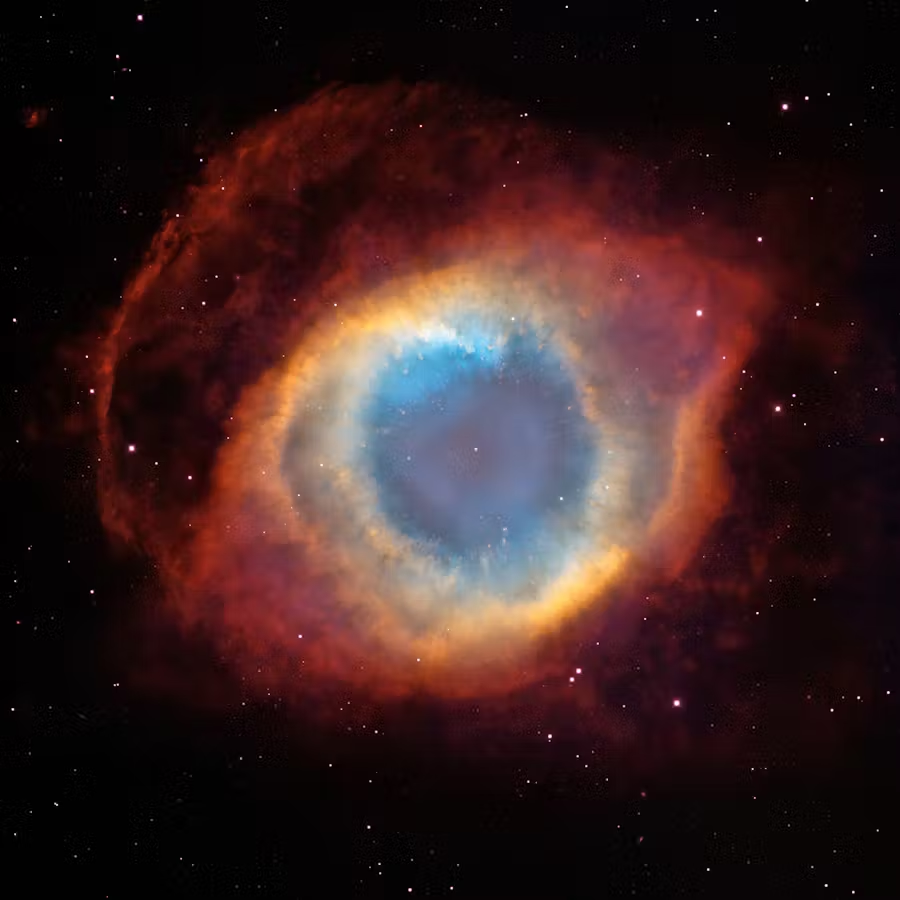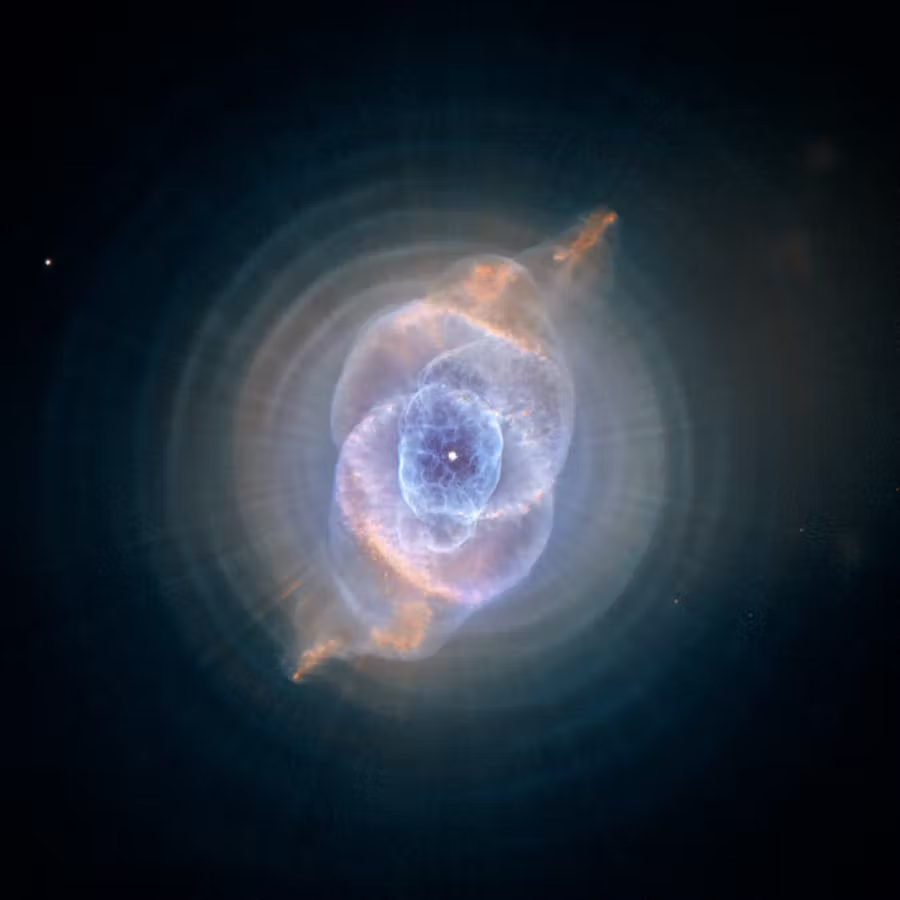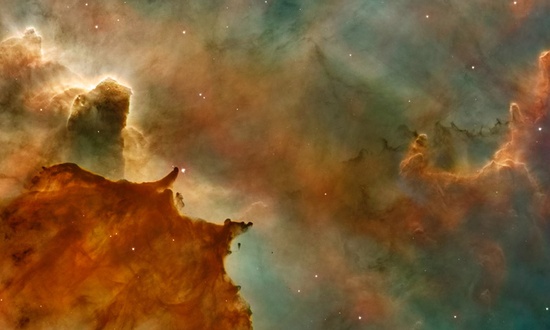Note from Randy: Astronomy has been an interest for me since my childhood. Years before I came to know Christ, I was outside every clear night looking through a telescope. I was fascinated by what I read about the violent collisions of galaxies, explosions of stars, and implosions into neutron stars and black holes. My love for the wonders of the universe helped prepare me to hear the gospel and respond to Christ.
Decades ago, I connected with Kevin Hartnett, who worked at NASA's Goddard Space Flight Center for 40 years, retiring as a Science Operations Manager for the Hubble Space Telescope. Kevin is not only an accomplished scientist, but an amateur astronomer and astro-photographer. He is also an outstanding poet, overflowing with excitement about all things astronomy. Above all, he is a God-worshiper.
Kevin produced a beautiful and inspiring book called The Heavens: Intimate Moments with Your Majestic God, which is filled with a sense of awe and wonder that deeply honors God. Though the book is now out of print, you can download it for Kindle and also check out some of the book photos on Google Books.
Kevin told me in a recent email, “The heavens can never stop declaring His genius, power, and unsearchable excellencies.” I hope you enjoy this great article.
The Cosmos Keeps Preaching: My Faith After Forty Years at NASA
By Kevin Hartnett
Have you ever landed great seats at a concert, show, or sporting event — seats right down front, near the center of the action? That’s very much how I think about my position as an employee at NASA’s Goddard Space Flight Center over the past forty years (now retired), a career spent assisting in the development and testing of satellite control centers and directing the operation of various scientific missions.
As one who had joyfully studied physics and astronomy in college, I landed an enviable front-row seat to watch (and participate in) the technological advances in aerospace engineering and the growth of the scientific disciplines I so love. In fact, my last 25 years were spent helping to manage science operations on the celebrated Hubble Space Telescope program.
Astronomical Growth Spurt
During my tenure at Goddard, satellite-borne telescopes successfully peered above the filtering and blurring effects of earth’s atmosphere for the first time. Book publishers have frankly been busy ever since, rewriting and revising astronomy textbooks for all grade levels, as fresh discoveries now occur virtually every semester.

ESA/Hubble
The Hubble mission alone has contributed immensely to our understanding of the cosmos. Who knew, for instance, that the universe was not only expanding, but accelerating? Who foresaw the immense morphological variety and complexity of planetary nebulae (see embedded photos) — faint, disk-like objects named by William Herschel upon finding them in his telescope more than two hundred years ago? Who could fathom that true planets around other stars are so commonplace that many can be detected through the periodic dimming of their stars when these “transiting exoplanets” pass in front of them? Who also knew that supermassive black holes occupy the centers of nearly every sizeable galaxy?
All these insights and many more were brought to textbooks through solid observational evidence collected by Hubble. Follow-on investigations and even more discoveries are now being made by NASA’s James Webb Space Telescope.
Written Across the Sky
To those who have ears to hear, these wonders all marvelously confirm the truth given us in Psalm 19:1–2:
The heavens declare the glory of God,
and the sky above proclaims his handiwork.
Day to day pours out speech,
and night to night reveals knowledge.
Indeed, many glorious attributes of God are now loudly and profoundly declared to us nightly from diverse space telescopes and ground observatories all around the world. Among the qualities demonstrably proclaimed are his intellectual genius, his endless creativity, his eternal power, his exquisite, beautiful, and purposeful craftsmanship, and his divine nature (see Romans 1:20).
Equally marvelous, it is undeniably the case that the deeper you look and the more you listen, his genius, creativity, power, and beauty only become clearer. Why is the universe expanding? We don’t know — but he does! Scientists attribute it to something they call “dark” energy — dark because it’s unknown.
Planetary nebulae are now understood to be stars in the death throes of existence — literally throwing off portions of their outer layers in response to collapsing and rebounding material at their cores. How do the size, mass, and spin of these dying stars dictate the location and shape of the layers expelled? We don’t know!
Why do exoplanet systems look so different from our solar system? We don’t know! Many have Jupiter-sized planets very close to their stars or Neptune-sized icy bodies farther away. Why don’t all sizeable galaxies have supermassive black holes at their centers? We don’t know! Our large and beautiful celestial neighbor, the Triangulum Galaxy, Messier 33, apparently does not.
Unimaginably Complex
Ah, but these are the simple questions. How our space-time, matter-energy universe actually works at its most basic level gets as infinitely deep and amazing as a graph of the Mandelbrot set. Why, even the lowly proton itself — the building block of every atom — has now been described as “the most complicated thing that you could possibly imagine. . . . In fact, you can’t even imagine how complicated it is.” The proton is apparently a quantum-mechanical object that exists as a haze of probabilities — a sea of transient gluons, quarks, and antiquarks — in some sense indeterminate until an interaction with it, or observing it, causes it to take a concrete form.
In addition to dark energy, there is evidence for the existence of an unknown type of matter that is gravitationally controlling the members of the (proton-based!) periodic table of elements that we at least recognize, if not understand. Like dark energy, it is simply called dark matter since we don’t know what it is either. Between the two — dark energy and dark matter — the standard model of the cosmos accepted by most astronomers today admittedly can’t account for about 95 percent of what it postulates is “out there.”
And just how quantum fields and particles interact at the most minute scale (if one can even define such) does have cosmic implications, like whether the universe will expand forever or ultimately collapse upon itself. This is why cosmologists and astrophysicists study phenomena like colliding neutron stars and black holes. Their velocities and energies reveal truths about the nature of matter and antimatter that are extremely difficult to discern — even using our most powerful particle colliders. Thus, no matter what corner of the universe you examine, the nature and operation of the processes involved are inevitably more exquisite and complex than first realized.

ESA/Hubble
Heavenly Calling Card
God actually appears to delight in this heavenly complexity. We find a number of places in his word where he uses the heavens to set forth the extent of his knowledge, power, and might.
- Psalm 96:5: “All the gods of the peoples are worthless idols, but the Lord made the heavens.”
- Psalm 147:4–5: “He determines the number of the stars; he gives to all of them their names. Great is our Lord, and abundant in power; his understanding is beyond measure.”
- Isaiah 40:25–26: “To whom then will you compare me, that I should be like him? says the Holy One. Lift up your eyes on high and see: who created these? He who brings out their host by number, calling them all by name; by the greatness of his might and because he is strong in power, not one is missing.”
- Isaiah 55:9: “As the heavens are higher than the earth, so are my ways higher than your ways and my thoughts than your thoughts.”
You might say that, in some sense, our Lord uses the heavens as his calling card.
YHWH
If so accepted, what might the name on his calling card be? Well, he revealed one to Moses at the burning bush (Exodus 3:14) — the great Jewish tetragrammaton, the four letters YHWH, variously translated as “I am what I am,” “I am that I am,” or most simply, “I am.” He is the ultimate reality, the one underlying all existence. Because he purposed to do so, he commanded the cosmos into existence from nothing (Psalm 33:6–9; 148:3–5; Hebrews 11:3).
What makes more sense than an infinite being designing a universe that’s both infinitely revealing and confounding? Indeed, the more intently you look at the universe, the more it looks unsearchably complex, mysterious, and exquisite (Psalm 145:3).
NUMBER 1/137
Even secular scientists wax theological when they discover aspects of the underlying mathematics of the universe that defy explanation. The great physicists Richard Feynman, Paul Dirac, and Wolfgang Pauli all felt this way about the strange, dimensionless number 1/137 that nearly perfectly defines something called the “fine-structure” or “electron-photon coupling constant.” Feynman wrote,
It has been a mystery ever since it was discovered . . . and all good theoretical physicists put this number up on their wall and worry about it. Immediately you would like to know where this number for a coupling comes from. . . . Nobody knows. . . . You might say the “hand of God” wrote that number, and “we don’t know how He pushed his pencil.”
PRECISION TUNING
Indeed, for as much as we don’t know about how the universe actually works, astronomers now acknowledge (some reluctantly) that the fundamental values of things like the ratio of the electromagnetic force to gravity and the value of Einstein’s “cosmological constant” (which represents the energy density of space) could not be even minutely different from their measured values or the universe as we know it would not be able to function. The former value must be exact by one part in 1040, and the latter by at least one part in 1090 (Stephen C. Meyer, Return of the God Hypothesis, 142, 152).
For context, the estimated number of subatomic particles in the whole universe is on the order of 1080. Imagine trying to be so exact that you could confidently count all the subatomic particles in the universe plus or minus one — and then somehow be ten billion times more accurate still! This is the level of precision in the physics that underpins reality.
ANTHROPIC PRINCIPLE
Commenting on these constants and many similar ones that appear to be exquisitely fine-tuned to produce an orderly universe, the famous astrophysicist Stephen Hawking noted, “The remarkable fact is that the values of these numbers seem to have been very finely adjusted to make possible the development of life” (Return of the God Hypothesis, 141).
Indeed, during the last several decades, there has been a demonstrable shift from the belief that life-bearing planets like ours must be commonplace in the cosmos, to the scientific realization that we’re more likely rare, or possibly even unique. This is not only because our atoms are fine-tuned to hold together properly, but because the unlikely circumstances of humanity’s placement in a spiral galaxy, around a relatively quiet star of the right color, at the right distance from it, held stable by a large moon, on a planet with sufficient mass to hold an atmosphere and water, having the right atmosphere, having a protective magnetic field, and so on, all multiply together as improbabilities to yield something nearly impossible.
Contemplating such facts, British physicist and author, Paul Davies, wrote: “The really amazing thing is not that life on Earth is balanced on a knife-edge, but that the entire universe is balanced on a knife-edge. You see, even if you dismiss mankind as just a mere hiccup in the great scheme of things, the fact remains that the entire universe seems unreasonably suited to the existence of life — almost contrived — you might say a ‘put-up job’” (Source).
This postulate actually has a scientific name, the Anthropic Principle, which basically states that the universe exists in a way that it allows observers to come into existence. While nuanced and still debated, one version of the principle, espoused by the man who coined the term “black hole” (John Wheeler), suggests on the basis of quantum mechanics that the universe — as a condition of its existence — must be observed. Coupled with the new understanding that each proton in the universe somehow requires the interaction with another particle or an observer to dictate its ultimate properties, this makes the whole theory both more believable and more unfathomable. To me, these qualities beautifully describe the Lord himself.
Honestly, my faith is also strengthened knowing that God, who built such scientific conundrums into creation and gave us the Scriptures, kindly described his activity thousands of years ago in these understandable words (Isaiah 45:18):
Thus says the Lord,
who created the heavens
(he is God!),
who formed the earth and made it
(he established it;
he did not create it empty,
he formed it to be inhabited!):
“I am the Lord, and there is no other.”

ESA/Hubble
‘What Is Man?’
Many people tell me that when they learn about the immense objects in the heavens or the almost unimaginable distances to the stars, they feel incredibly insignificant. One can hear the same sentiment from King David in Psalm 8:3–4:
When I look at your heavens, the work of your fingers,
the moon and the stars, which you have set in place,
what is man that you are mindful of him,
and the son of man that you care for him?
Compared with the size of the universe — even one star in it — it’s true: we’re of very little account. But stars and galaxies aren’t the most impressive item of God’s creative work. Genesis tells us clearly that the creation of Adam and Eve was the pinnacle of God’s activity in the creation week. After everything else was formed, the triune God said, “Let us make man in our image, after our likeness” (Genesis 1:26). Genesis 1:27 goes on to say, “God created man in his own image, in the image of God he created him; male and female he created them.”
As stunning as they are, galaxies were not made in the image of God. It is men and women, boys and girls, who are rational and moral beings made like God himself. If he counts the trillion upon trillions of lifeless stars and has names for them all, do you think the eight billion or so human beings alive today, who exist in his very image, escape his moment-by-moment attention? In Matthew 10:29–30, Jesus says that our Father knows the whereabouts of every sparrow, and that even the hairs on our head are numbered (maybe he has names for them too?!). We should judge our significance to him in the light of these truths.
Hark! The Herald Heavens Speak
Psalm 19:1–2 tells us simply but so profoundly, “The heavens declare the glory of God, and the sky above proclaims his handiwork. Day to day pours out speech, and night to night reveals knowledge.” The complexity, size, power, and grandeur of the universe are God’s intentional gifts to us. They are meant to help us understand what he is like — to lovingly help us apprehend our Maker as the unsearchable ultimate reality that he is.
Indeed, the heavens are declaring at this very moment that our God is magnificent beyond comprehension. Listen to them. Hear how their countless hosts strive day after day and night after night to declare the least part, the smallest measure, of his great glory. It is never enough; it never will be; it never can be. He is infinite. Have you heard their voices? Have you joined their chorus?
Dazzling phosphors in the night,
Silent orators, so bright,
How I marvel at your story
And the Hand behind your glory.
This article originally appeared on Desiring God, and is used with permission of the author.




